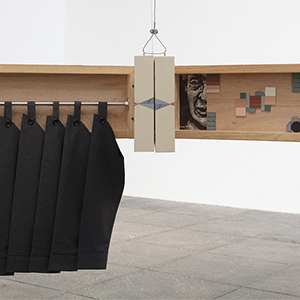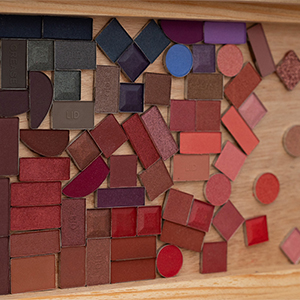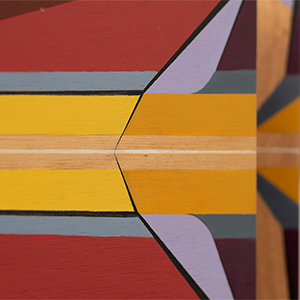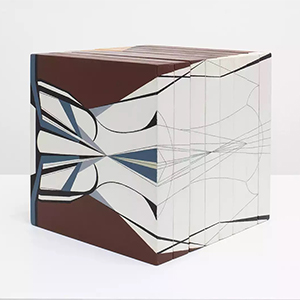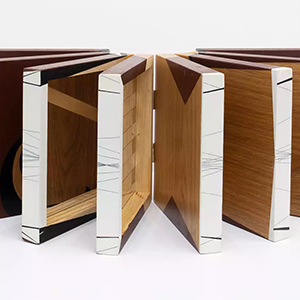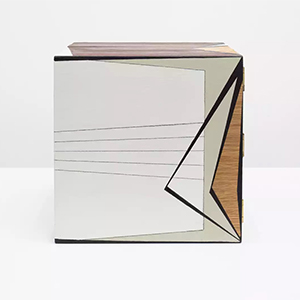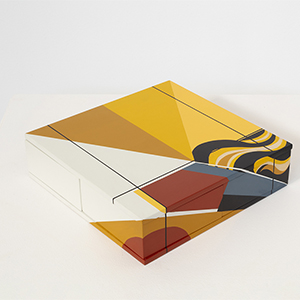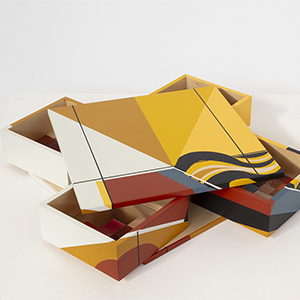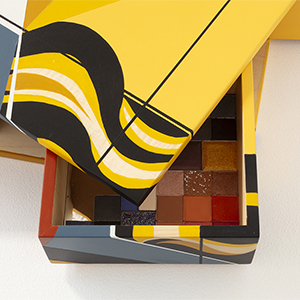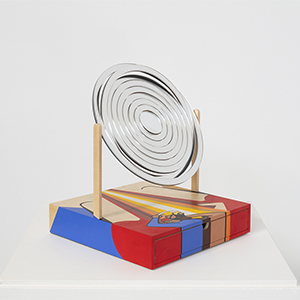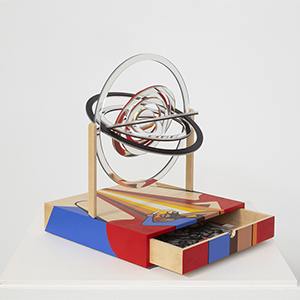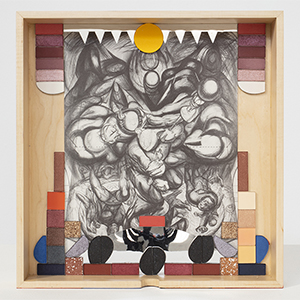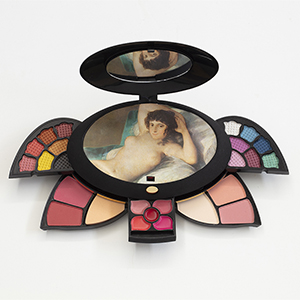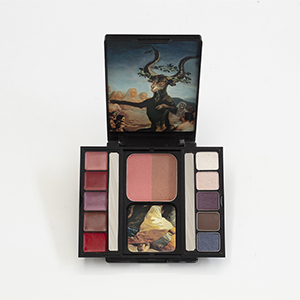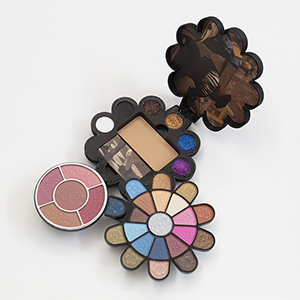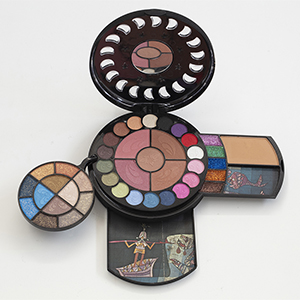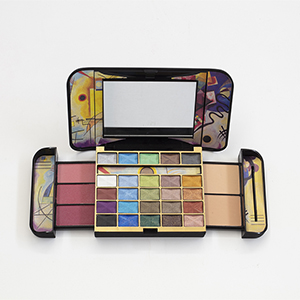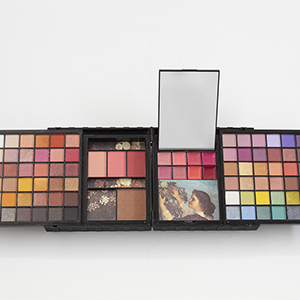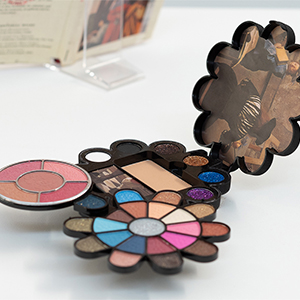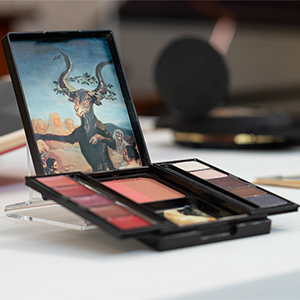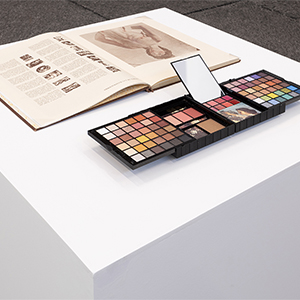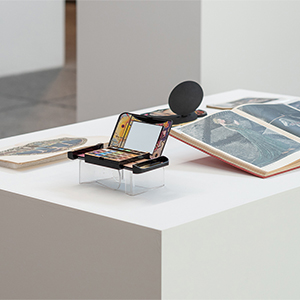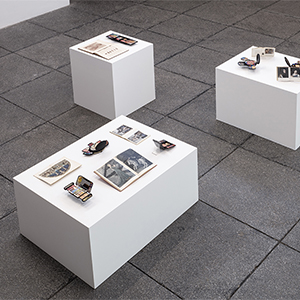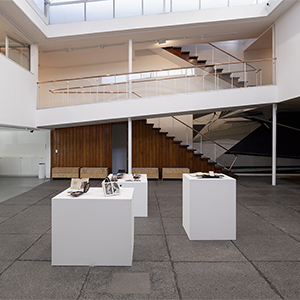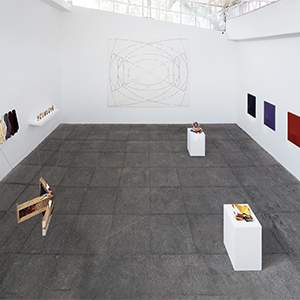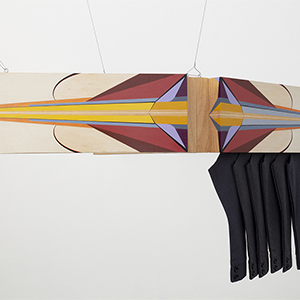
Rubén Garay
The Cajas plásticas (Plastic boxes) series contains two work groups, Pandoras and Urnas (Urns), whose main characteristic is their structure for use as makeup cases or vanities. On the one hand, Pandoras are vanities designed as wooden boxes that unfold between drawers and mirrors, forming various dimensions of perception between color, makeup and reflections. These boxes appeal to plastic motifs of modern male artists. While Urnas is more strongly perceived as a ready-made, this collection of black makeup cases also unfolds in a playful way to give rise to an endless number of shadow palettes that are not altered but preserved to be intervened by clippings from old art books with traditional painting that show pictures of women—from Virgins to Venus—as well as modern abstract paintings. The point in both series is to generate a resonance between the color palettes, the very materiality of the shadow, its feminine connotations and the invasion of the painting itself that lies like an internal window that reverberates on the history of the gaze, the origin and the misogynistic sense of the pictorial tradition.
§
La serie Cajas Plásticas contiene dos grupos de trabajo, Pandoras y Urnas, cuya principal característica es su estructura de uso como estuches o tocadores de maquillaje. Por una parte, las Pandoras son tocadores diseñados como cajas de madera que se desdoblan entre cajones y espejos formando varias dimensiones de percepción entre el color, el maquillaje y los reflejos, dichas cajas apelan a motivos plásticos de artistas varones modernos. Mientras que Urnas se potencia más como un ready-made, esta colección de estuches negros de maquillaje también se despliega de forma lúdica para dar lugar a un sin fin de paletas de sombras que no son alteradas sino conservadas para ser intervenidas por recortes de viejos libros de arte con pintura tradicional que muestran cuadros de mujeres —desde Virgenes a Venus— así como cuadros modernos de pintura abstracta. El punto en ambas series es generar una resonancia entre las paletas de color, la materialidad misma de la sombra, sus connotaciones femeninas y la invasión del propio cuadro que yace como una ventana interna que reverbera sobre la historia de la mirada, el origen y el sentido misógino de la tradición pictórica.
